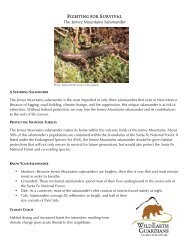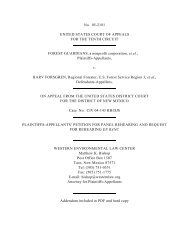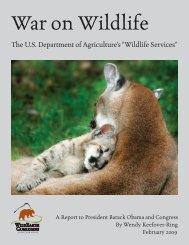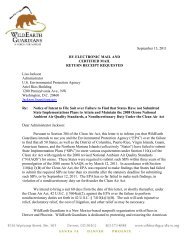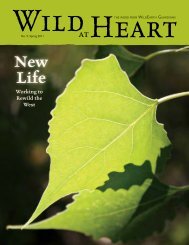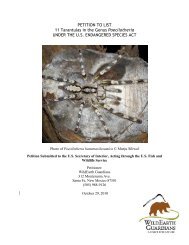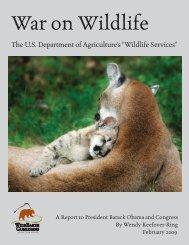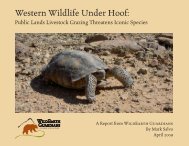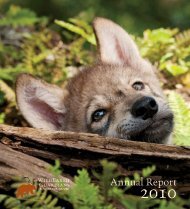PETITION TO LIST THE JEMEZ MOUNTAINS SALAMANDER ...
PETITION TO LIST THE JEMEZ MOUNTAINS SALAMANDER ...
PETITION TO LIST THE JEMEZ MOUNTAINS SALAMANDER ...
Create successful ePaper yourself
Turn your PDF publications into a flip-book with our unique Google optimized e-Paper software.
WildEarth Guardians Petition to List<br />
Jemez Mountains Salamander Under the ESA<br />
19<br />
Due to the variation in known locations throughout the many decades and differences in<br />
observed individuals within areas, it is difficult to determine population size and<br />
therefore, changes in population trends. Salamander detection is highly variable, as this<br />
species is secretive, subterranean, and only active during specific environmental<br />
conditions. When a site is surveyed and found to be absent of salamanders it does not<br />
unequivocally indicate this species is not present (Cummer 2003; Everrett 2003;<br />
Ramotnik 2003). Researchers have tried to determine what habitat characteristics best<br />
predict the presence of these salamanders (Trippe and Haarman 1996; NMDGF 2000c).<br />
Although it is difficult to determine changes in population trends, stand re-placing<br />
wildfires and associated salvage operations are known to cause declines in Jemez<br />
Mountains salamander populations (Painter 2000b; Borg 2001). Since 1996, three major<br />
stand replacing wildfires have occurred within Jemez Mountains salamander habitat:<br />
Dome (April/May 1996), Cerro Grande (May 2000), and the BMG/Lakes (June 2002 and<br />
August 2002 respectively). A total of 64,019 acres burned with 38% of the burned<br />
acreage (24,118 acres) experiencing a high severity burn (Table 3). Within the Cerro<br />
Grande fire itself, of the total 30,510 acres of Essential Zone, 4,989 (16%) were within<br />
the fire perimeter and 1,741 acres experienced moderate to high mortality of all<br />
vegetation (Team 2000) (Figures 4 and 5). This is 37% of the designated Essential Zone<br />
habitat that occurs east of the VCNP (Team 2000). Either salvage operations or thinning<br />
treatment were proposed and/or conducted after each of these fires. The areas proposed<br />
and/or affected by these operations totaled 7,152 (5%) acres of known or potential Jemez<br />
Mountains salamander habitat (Table 4 and 5). A total of 16.2% (4,963 acres) of salvage<br />
operations were proposed/conducted in Essential Zone (Table 5) (Figure 4).<br />
Land ownership<br />
More than 90% of the populations of the Jemez Mountains salamander are believed to<br />
occur on lands administered by the SFNF (NMDGF 2006b). The land delineated by the<br />
CMP to have known and potential populations of Jemez Mountains salamanders totals<br />
146,790 acres (Figure 2), all of which the SFNF administers.<br />
Additional populations are found on lands owned by Santa Clara Pueblo (Tribal),<br />
Bandelier National Monument (National Park Service), VCNP (National Park Service),<br />
and Los Alamos National Laboratory (Department of Energy). The VCNP was<br />
previously privately owned and known as Baca Location No. 1. Surveys conducted<br />
through 2000 determined the existence of small populations (fewer than ten individuals<br />
per site) on these lands located outside of the SFNF (Figure 2) (NMEST 2000b).



